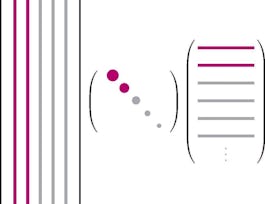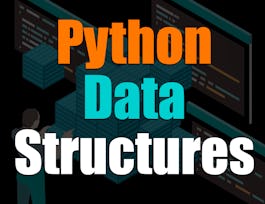This course is the first of a series that is designed for beginners who want to learn how to apply basic data science concepts to real-world problems. You might be a student who is considering pursuing a career in data science and wanting to learn more, or you might be a business professional who wants to apply some data science principles to your work. Or, you might simply be a curious, lifelong learner intrigued by the powerful tools that data science and math provides. Regardless of your motivation, we’ll provide you with the support and information you need to get started.



Introduction to Linear Algebra and Python
This course is part of Linear Algebra for Data Science Using Python Specialization


Instructors: Dennis Davenport
Sponsored by Barbados NTI
4,479 already enrolled
(15 reviews)
Details to know

Add to your LinkedIn profile
10 assignments
See how employees at top companies are mastering in-demand skills

Build your subject-matter expertise
- Learn new concepts from industry experts
- Gain a foundational understanding of a subject or tool
- Develop job-relevant skills with hands-on projects
- Earn a shareable career certificate


Earn a career certificate
Add this credential to your LinkedIn profile, resume, or CV
Share it on social media and in your performance review

There are 4 modules in this course
In module 1, you'll learn how to explain fundamental concepts of linear algebra and how to use Python, one of the most powerful programming languages, to model different data. We will cover the following learning objectives.
What's included
15 videos6 readings3 assignments2 discussion prompts
Let's recap! In module 1, you performed software installation, learned some best practices, and learned how graphs are used to model data in Python. In module 2, you'll gain the knowledge you need to use linear algebra to solve data science problems. You'll also perform matrix algebra on large data sets using Python. We will cover the following learning objectives.
What's included
7 videos1 reading3 assignments1 discussion prompt
Let's recap! In module 2, you learned how to use linear algebra to solve data science problems. Using Python, you also learned how to perform matrix algebra on large data sets. In module 3, you will learn how to define vector equations and use vector equations to model data. We will cover the following learning objectives.
What's included
7 videos3 assignments1 discussion prompt
Welcome to the final module of this course! Over the past 3 modules, you have been introduced to and gained knowledge on the following topics:- Version control - Git Bash, Jupyter Notebook via Anaconda, NumPy and SymPy, and other software tools, Modeling data, Matrix algebra and, Vector equations. In the final module of the course, you'll apply what you've learned to concrete, real-world examples. You'll practice using vector equations to study data sets and provide peer reviews. We will cover the following learning objectives.
What's included
4 videos1 reading1 assignment1 peer review
Offered by
Why people choose Coursera for their career




Recommended if you're interested in Computer Science

University of Minnesota

Coursera Project Network

Association of International Certified Professional Accountants

Scrimba

Open new doors with Coursera Plus
Unlimited access to 10,000+ world-class courses, hands-on projects, and job-ready certificate programs - all included in your subscription
Advance your career with an online degree
Earn a degree from world-class universities - 100% online
Join over 3,400 global companies that choose Coursera for Business
Upskill your employees to excel in the digital economy


